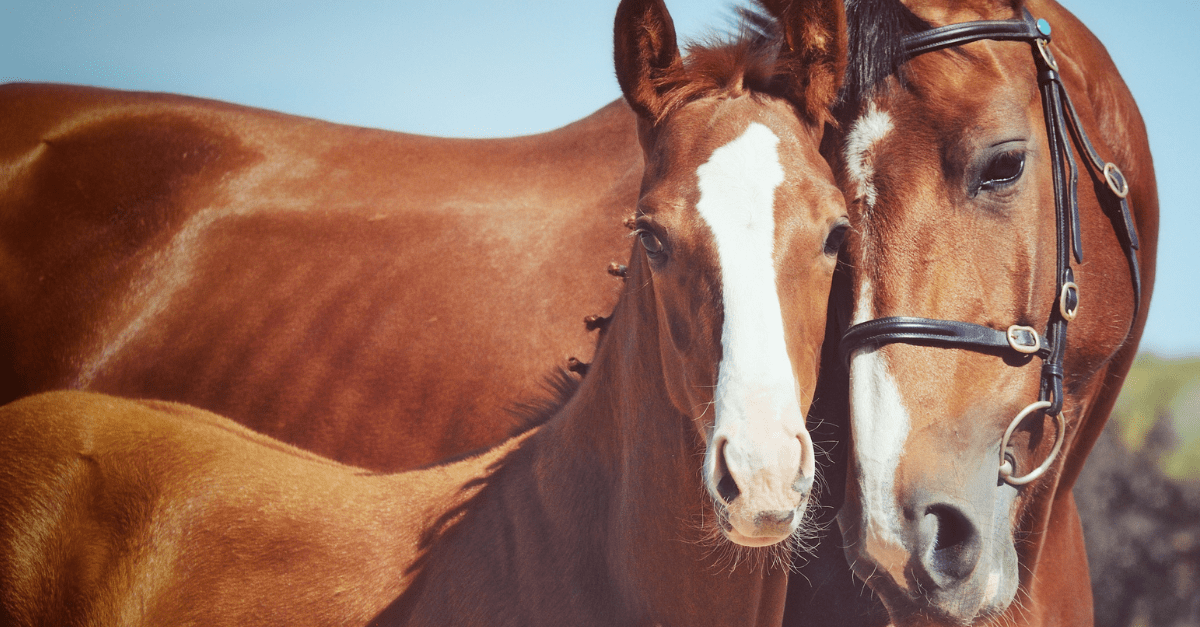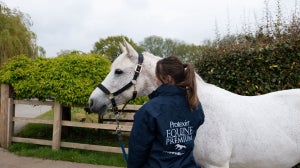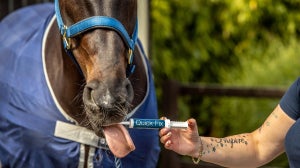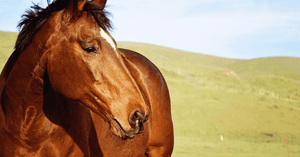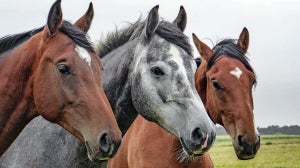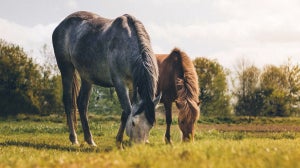
What you need to know
Breeding your mare and the arrival of her foal can be stressful for all involved. However, keeping your mare and foal happy and healthy shouldn’t be hard! To guide you through this process we prepared this helpful article.
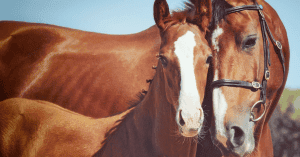
1. Breeding your mare
Before choosing to breed your mare make sure she has a thorough veterinary examination to check:
Her general and reproductive health
Conformation
Any negative genetic traits which could be passed onto her foal.
You may need to have a blood sample or swabs taken to check for certain diseases, so plan ahead. She should be in good body condition, but not overweight, and be fully vaccinated and wormed. Unless you’re trying to breed the next Red Rum (or any thoroughbred racehorse, in which case the rules dictate that you must use natural cover) you have a few options to consider when trying to get your mare in foal.
Natural Cover
Natural cover between a mare and a stallion has a high chance of success, and in many ways requires the least effort, but comes with the risk of physical injury and disease transmission.
Artificial Insemination
Artificial insemination using chilled or frozen semen requires quite intensive veterinary help – including multiple ultrasound scans per day to monitor your mare’s ovaries. But, the mare and stallion never meet so stallions can father foals all over the world, all year round, and even many years after they have died!
Embryo Transfer
For mares in high level competition or with a medical condition which precludes them from carrying a foal, embryo transfer allows them to pass the job of motherhood onto a ‘recipient’ mare. Insemination is done artificially and after a few days the embryo is collected from the mare and transplanted into another mare which will carry and raise the foal. Ultimately the choice between these 3 systems will depend upon many factors related to your mare and chosen stallion. Discuss your options with your vet and chosen stud.
Top Tip: Ensure your mare has a thorough veterinary examination before putting her into foal and be sure to check off everything from our list below:
Vaccination and worming status
Swabs +/- blood sample taken
Date of first cover/insemination
Date of last cover/insemination
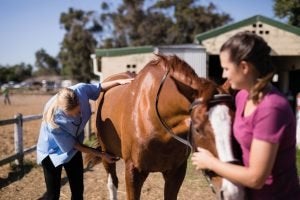
2. Pregnancy diagnosis
Once covered, your mare will need to be scanned by a vet to confirm that she is pregnant and to check for twins.
First Scan
This is generally carried out around day 16 after cover, when the embryo appears as a small dark circle on the scan. This is the best time to identify a twin pregnancy as the embryos are still mobile, and one can be moved before being destroyed.
Second Scan
A scan at day 21 checks for proper implantation of the embryo into the wall of the uterus, and is a second chance to look for twins.
Third Scan
This can be done between days 24-34 to check for the tiny embryonic heart beat and make sure the embryo is developing properly. From day 35 changes in the placenta mean that the mare is unlikely to come back into season for some time if she loses the foal and the opportunity to breed from her this year is lost.
Top tip: Successful twin pregnancies are very rare and can put the mare in danger. Scans are important to check for twins, and on the progress of the embryo.
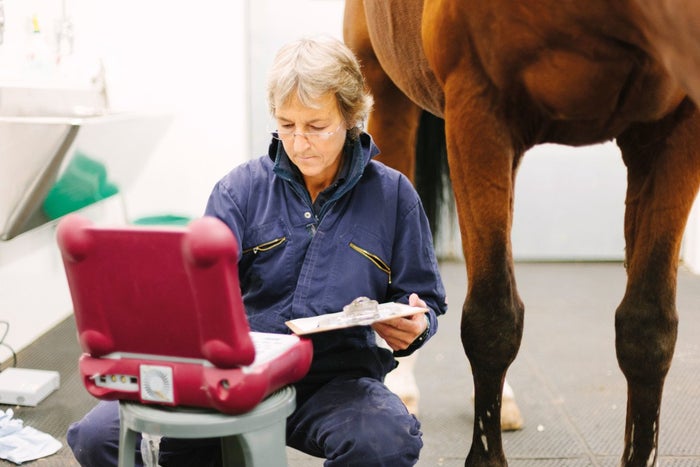
3. The pregnant mare
A typical equine pregnancy will last for approximately 340 days (with a range of about 320-365), and during this time your mare deserves a stress free, healthy lifestyle. For the first 7 or 8 months of pregnancy she doesn’t require any extra energy in her diet, in fact over conditioning at this time only adds weight to her limbs and increases the chance of problems during labour.
Top tip: Ask your vet about body condition scoring, which will help you to keep her condition steady despite her belly getting bigger.
Feeding Advice
Feed good quality grass or forage, with additional vitamins and minerals where required (sending forage off for analysis is a great way to avoid any issues). In late pregnancy your mare will require additional calories to maintain her condition as the foetus grows, and eventually as she starts producing milk. Speak to a nutritionist about good quality, low non-structural carbohydrate feeds fortified with vitamins and minerals, and make sure good quality forage remains available. Oil can be a useful addition to provide high density safe calories, especially if the mare’s appetite is reduced due to the reduced space in her abdomen. If you’re feeding oil, speak to your vet about providing adequate Vitamin E in the diet.
Vaccinations
You should consider having your mare vaccinated against equine herpes virus (EHV), especially if she shares a yard with many other horses, or is going to foal at stud (the stud will likely insist on vaccination in this case). EHV can cause abortion in mares and can be easily spread from horse to horse. It is also advisable to give a flu and tetanus vaccination booster roughly 4 weeks before foaling, to boost immunity at this vital time and ensure adequate antibody levels in the colostrum.
Top tip: Routine worming or a worming control plan is essential.
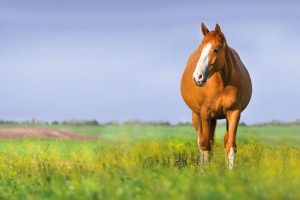
4. Foaling
Gestation length can be highly variable in mares but foaling tends to occur from 320 to 365 days from conception, 340 days on average. A few weeks before this period move her to the place where she will foal. Provide a clean, safe and quiet environment – large well maintained stables with deep straw beds are perfect.
As the mare gets close to foaling: > 2-6 weeks before her udder develops > A few days before her pelvis relaxes > 1-3 days before her teats wax up and she will begin to get restless (possibly entering stage one labour). Most foalings proceed quickly and without difficulty. The best advice is to leave the mare alone and let nature take its course. Intervening can cause problems with the foaling, foal health and the maternal bond. However, it’s important to pay attention from a distance (or via a camera) and to recognise when things are going wrong as swift veterinary intervention may be required.
What you may need in Labour: > Torch > Mobile phone > Tail bandage > Clean towels > String > Scissors > Plastic gloves > Headcollar and leadrope for mare > Bucket > Access to clean water
Stage One Labour
In stage one labour the mare is restless, maybe showing mild signs of colic, and contractions begin. It is important not to disturb her if possible during this time. During the early contractions the foal is changing position to allow its easy passage through the birth canal. At the end of stage one labour (which may last for an hour or more) the mare should be lying down and her waters will break. If a red fluid filled membrane protrudes from the vulva, it’s possible that the placenta has separated prematurely from the wall of the uterus. In these cases it is vital to call the vet straight away.
Remember: Any issues, call your vet!
Stage Two Labour
The breaking of the waters is the start of stage two labour. Stage two should last no more than 30 minutes as strong abdominal contractions begin to push the foal down the birth canal. Quickly the foal’s front feet, one slightly in front of the other, should be visible, followed by the head. There is no need to intervene during this process unless advised to do so by your vet. Once the foal’s abdomen is out the mare and foal may rest for a moment with the foal’s hind legs still inside the mare, and the umbilical cord intact, allowing the foal to receive more placental blood flow. The membrane covering the foal’s mouth usually breaks during delivery or is removed by the mare, allowing it to breathe. If this does not occur, clean it away and remove any debris from the nostrils. Once either the mare or the foal tries to stand the umbilical cord will break naturally. The cord should be treated with antiseptic fairly soon after birth.
Stage Three Labour
The mare then enters stage three labour – the expulsion of the placenta (after-birth). This usually occurs within an hour of foaling, but can take a little longer. It’s important that you keep the placenta for your vet to examine, as any pieces retained in the mare can cause a life threatening infection. If the placenta is not expelled within 3-6 hours please call your vet as it may need removing manually – do not try this yourself!
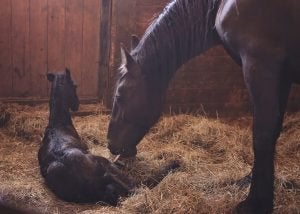
5. The newborn foal
Congratulations, after 11 months of waiting, your foal has been born! A few minutes after being born the foal should be sat up and alert. Usually within an hour the foal is stood, and should be suckling from the mare soon after. Those first few drinks are vital to boost the foal’s immunity with the mare’s antibody rich colostrum. Foals are particularly prone to infection, and those which don’t receive enough colostrum can quickly succumb to septicaemia, and joint ill. A blood sample can be taken 18-24 hours after birth to check the foal for adequate antibody levels. It’s also important to treat the umbilicus with a veterinary supplied antiseptic liquid or spray to prevent infection from getting in. The foal should pass meconium – sticky dark coloured droppings – within 12-24 hours, and urinate within 8-12 hours. The mare should quickly recover from labour, stand, eat and take an interest in the foal, encouraging it to suck.
Top tip: It’s always wise to have a vet check your mare and foal the morning after foaling has occurred.
6. The foal matures
Your foal will go through many milestones as they grow and mature. Proper nutrition and preventative healthcare (worming and vaccination) are critical to development and disease prevention. For the first 2 months or so the foal will nurse multiple times per day, but many will quite quickly begin to eat some solid food too. During this period supporting the mare is crucial to the health of the foal. Especially in early lactation she will require an energy dense diet, with good quality fibre. After 2-3 months milk quality begins to decrease and the foal will benefit from the provision of creep feed. Speak to a nutritionist about a balanced feed, suitable for both mare and foal. Keep careful track of the growth of your foal. Overfeeding and rapid growth rates are associated with developmental joint disease and angular limb deformities. From an early age the foal should exercise to help bone and muscle development. Daily access to a well fenced pasture is perfect for the mare and foal.
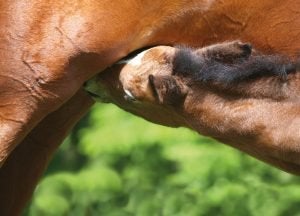
The Foal’s Gut Microbiota
Diarrhoea can be common in young foals as the diet and microbiota are changing rapidly. At around 7 days the foal may suffer from a brief period of diarrhoea, previously thought to be due to hormonal changes in the mare, but now linked with changes in the foal microbiota.
Top tip: Seek advice from a nutritionist about a balanced diet for your mare and foal.
Worming
Worming can begin at one month and should be carried out every 4-6 weeks until 6 months – under the advice of your vet.
Our final top tip: Foaling is an exciting time for any horse owner. It is extremely important to work closely with your vet before you decide to put your mare into foal and throughout the whole process.

